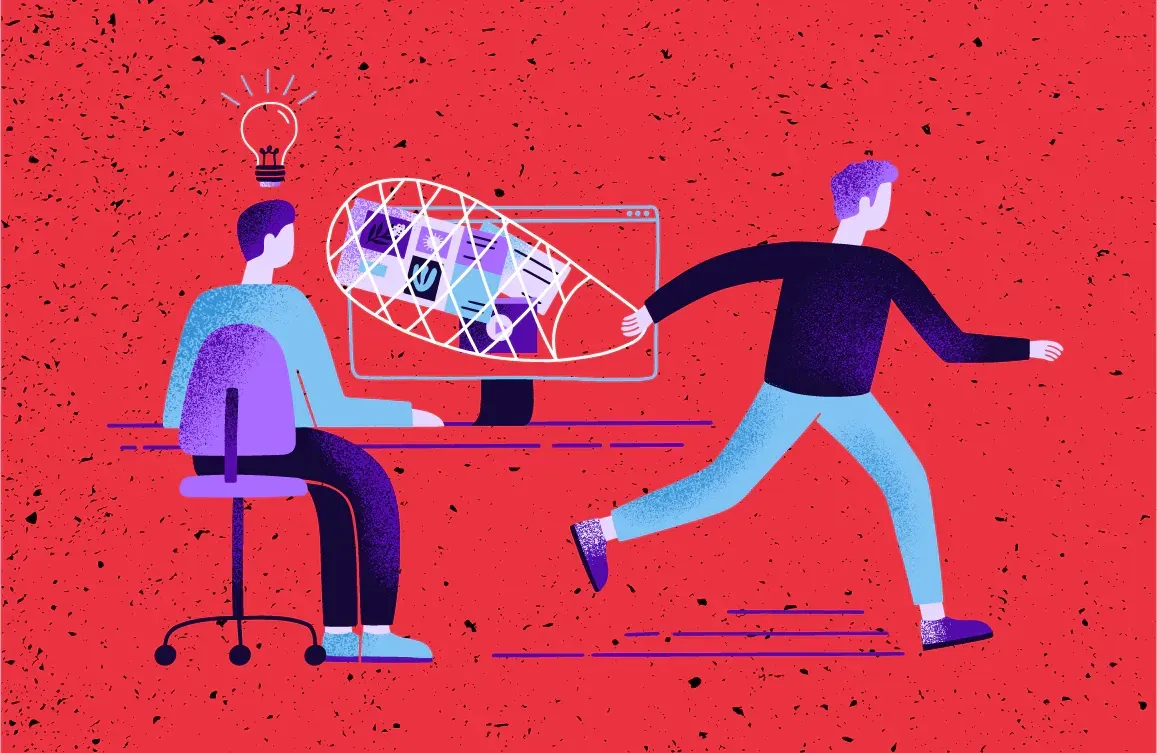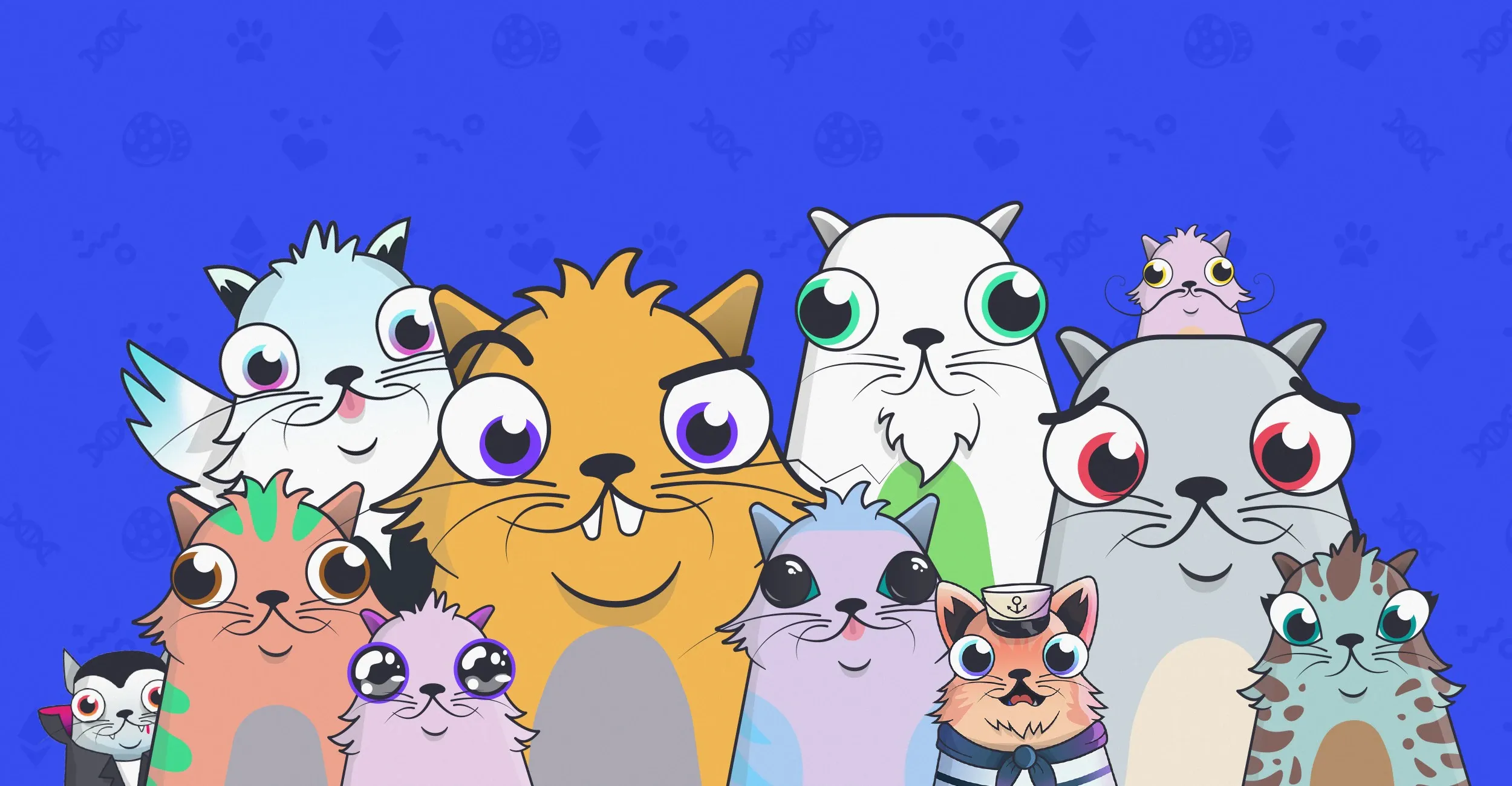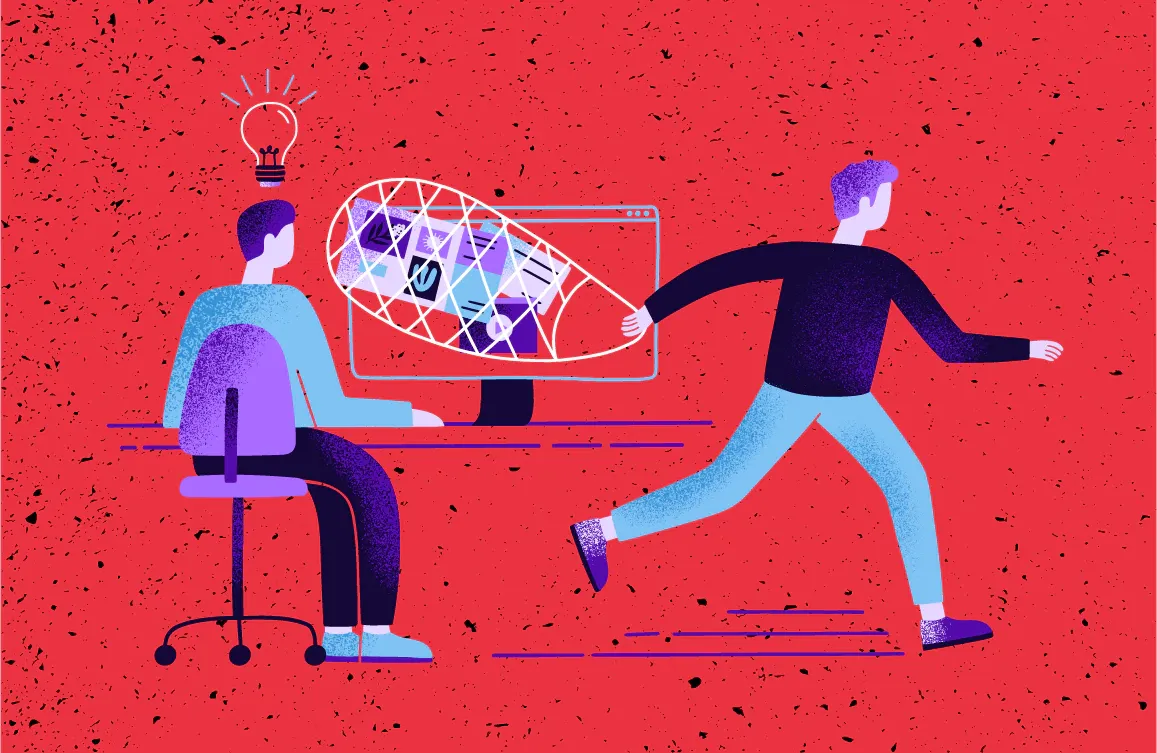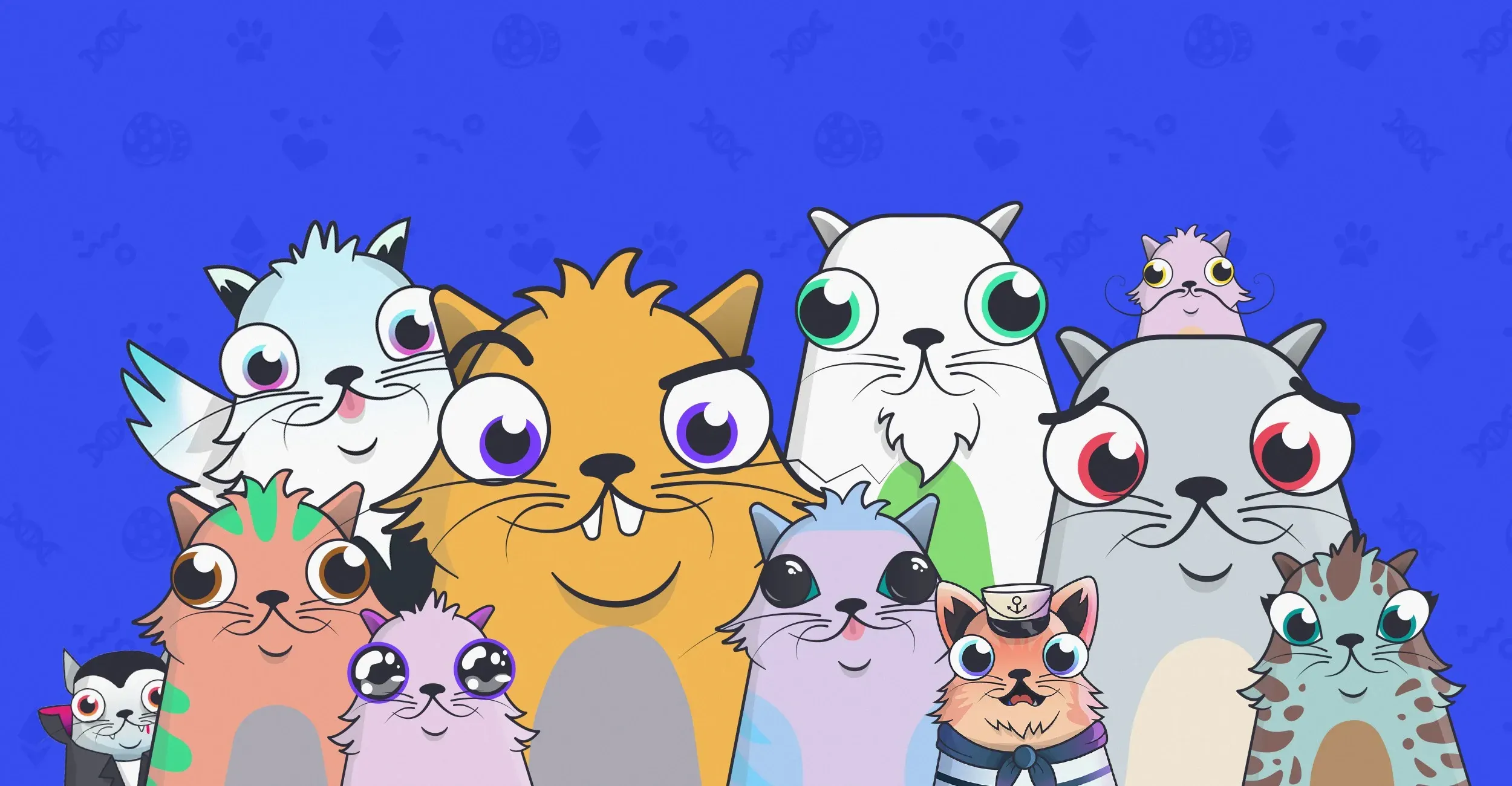The Dark Side of NFTs
Written by

Last week, The Big Idea published an article explaining NFTs (non-fungible tokens) – a form of digital asset that artists can use to sell their work. The aim was to demystify the terminology, explore how NFTs work and ask about its likely pickup/use in Aotearoa, primarily using the music industry as an example.
However, as is the case with any new disruptive technology, there are pros and cons to NFTs. We've received considerable - and considered - feedback from both sides of the NFT divide, and agree that it is pertinent to flesh out this debate. While they may open many new doors for artists, there are also downsides and pitfalls that you need to know about.
Ownership and copyright
Art theft is a growing issue with NFTs. Over the past few months, stories have emerged of artists discovering their work in online marketplaces, where they’re sold as NFTs without their consent.
The problem here is that the system on which NFTs operate was established several years ago, and has not been adapted to the way internet users can sell and trade decentralised assets, like art.
A very early form of NFTs was bundled up in a 2017 “game” called CryptoKittties. The game allowed players to purchase a limited number of virtual cats (sold as NFTs), and breed them with other players. Back then, these NFTs were created by the developers of the game, so they were unique to the game itself.
A player couldn’t just upload a copy of a cat to sell or use to their advantage, because the developers owned sole copyright over the cats that could be bought or sold. This control over who could and couldn’t mint new cats also meant that the developers controlled the number of cats in the marketplace at any one time. The cat market wasn’t going to flood.

The cute and strangely terrifying world of CryptoKitties.
In the art world, however, the creators of NFTs (which, in this case, are digital artists), have very little control over how and where their work is sold. This was a problem long before NFTs entered the picture, and the dream that NFTs seek to sell artists is not all that meets the eye, explains Wellington-based artist Pepper Raccoon.
“I don’t think NFTs solve any of the problems that they claim to solve. It’s basically just selling optimism.
“The value proposition of NFTs is that the proof of work ensures your original piece has a unique token attached to it, which means that the person who owns it knows that they have the ‘original’. But the problem is that someone can take a JPG and throw it up on a different marketplace, with a different token attached to it and sell it. There is no ‘original’.”

Image: Shutterstock.
So who can and cannot “mint” an NFT? The answer here is straightforward: the artist should have final say in the minting of their work (ie, how many “original” copies are sold) and where their work is sold. However, the lawlessness of the internet makes that ideal difficult to execute.
Given the financial strains that many artists have faced over the last year, it’s no wonder that the prospect of selling work online is tantalising. Pair that with the new, hyped world of cryptocurrency, it’s clear why some artists have turned to selling their work as NFTs to make ends meet. That said, to avoid your work being potentially ripped off, artists should do some digging into platforms that actively promote original work, and curate the pieces they sell.
“There are other ways [to sell digital art],” says Raccoon. “There’s a really cool platform that launched recently, using fiat currency, called Art Grab. You can license an image and it comes down off the website, and you own it. It’s just using regular money.
The way that it’s set up is basically celebrating the artist, rather than just putting up a million of something. It’s very curated, and I feel like that has a lot to do with fixing of value, is going, ‘these are artists that we believe in, these are artists that are doing interesting things and pushing the boundaries’, rather than saying ‘here’s a marketplace with eight million anonymised tokens that you can purchase’.”
Environment

Image: Shutterstock.
Just like the NFT system, the platform on which NFTs sit – the Ethereum blockchain – is outdated, unable to adapt to the volume and magnitude of global, frenetic adoption.
Like its competitor Bitcoin, the Ether (cryptocurrency) that sits on the Ethereum blockchain can be “mined” (or “created”) by everyday people using computers that solve complex mathematical equations. In exchange for mining the coin, these people are gifted coins. And as the coins become more valuable, the greater the impetus is to get mining. It’s essentially a symbiotic relationship: you scratch my back, I’ll scratch yours.
The problem is that the electricity it takes to mine Bitcoin and Ethereum is monumental. To put it in perspective, more carbon emissions are produced from the electricity required to mine new Bitcoin than the entire nation of Aotearoa. Some studies claim that Bitcoin is on track to eclipse the total energy consumption of London.
“A single piece of artwork sold as an NFT racks up a minimum of the equivalent of two weeks of household usage of energy in a single transaction,” says Raccoon.
Many NFT marketplaces are looking to shift their operating model, from running on a ‘proof of work’ system (in which computers must solve those equations in order to produce new coins) to a ‘proof of stake’ system, in which users show ownership of their coin in order to produce new coins.
In other words, users can essentially show that they own a portion of the ‘land’ (or blockchain), thus emphasising its perceived value, so that new blocks can be produced to create further value.
Will this systematic shift mitigate the climate impacts of blockchain technology? Perhaps temporarily. But the carbon emissions of Ethereum and Bitcoin mining are rising at an alarming rate, and require fairly drastic innovation to fully solve the problem. That kind of innovation costs money and time, and at present, the short-term financial gains far outweigh the longer term environmental impacts for those involved.
However, it’s those environmental impacts of Ether mining that have caused some musicians to ditch their NFT efforts altogether until more sustainable methods are introduced.
Barriers to entry and flow of money
NFTs have been described as “pyramid schemes” by artists.
Many rich and powerful people all over the globe have invested in Ethereum, and therefore have a vested interest in seeing it succeed. Those same investors are the ones who write the massive cheques that have made headlines, says Raccoon. “The bigger art sales that you see happening, like the $69 million purchase of Beeple’s artwork was made by a guy who has a very large stake in the success of cryptocurrency.”
The ‘pyramid’ aspect of the NFT system means that it’s incredibly hard for emerging artists to get on the ladder. Without the following or the fame, many artists struggle to sell their work. “The people at the top who are already famous, those artists who are dropping NFTs and already have a huge following are the ones that are making the money,” says Raccoon. “A lot of people are sold this dream of making thousands and thousands of dollars, when in reality it’s just another more concentrated traditional art market.”
So what should artists do?
Raccoon doesn’t hesitate with her opinion.
“Watch and wait,” she states, “and be careful with the idea of imagined value. When you’re sold on the idea that your work has imaginary value – virtual value on the internet – someone is gaining from that. It’s important to look at where the money is actually going, and that’s why I think sitting and waiting is the right thing.”
The NFT market is still very young, and like many immature markets, it’s going through some teething problems and posing some serious questions. Will it crash and burn? Or will it innovate and become a more regulated platform, thus eliminating risk of copyright infringement and the existing hierarchies of power? Will new, sustainable platforms emerge that tackle some of the most energy-sapping aspects of the technology?
Only time will be able to illuminate those answers. And while the art world has debated about the unsustainable and unethical aspects of NFTs, the bottom line is that artists should be able to earn a living from their work and not have to worry about contributing to a pyramid scheme, the downfall of the Earth’s ecology, or even judgement from their peers.
And if anything, the NFT market has opened up a valuable discussion over how artists can make money from selling their work, in a world that is becoming increasingly decentralised.
“Artists should act with integrity and intention,” says Raccoon, “and the idea of buying into a ‘get-rich-quick’ scheme that destroys the environment is inherently unethical and problematic. Even just the impact of selling NFTs: there’s so much of the art audience that is so incredibly turned off by that, that you’re going to lose some of your audience, so artists need to decide whether that’s actually worth it.”
However, in light of the backlash over the artists who choose to embrace NFTs as a way of making money, it’s important to recognise that those artists don’t represent the problem.
“As much as it can be tempting to blame or get angry at other artists for their decision to participate in NFTs,” says Raccoon, “at the end of the day we need to be a community and it’s really important for artists to encourage sustainable ways of making a living. [The artists] aren’t actually the people that are the problem, it’s the way that Ethereum is designed and the people that are profiting off Ethereum that’s the figurehead of the issue.”

